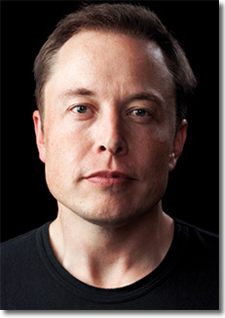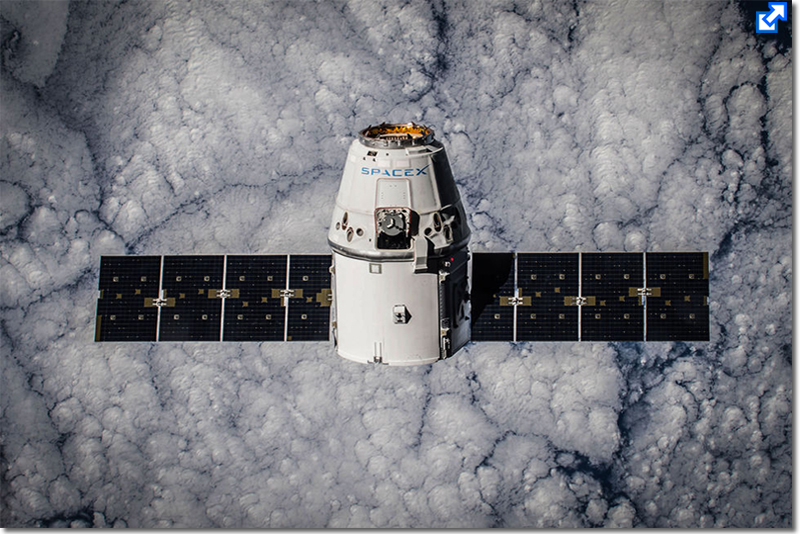The Billion Dollar Race for Internet Space
A handful of billionaires are racing one another to deliver the Internet from the sky with two new investors clearly seeing real promise in SpaceX's goals as articulated by head Elon Musk, and providing SpaceX with a $10 billion valuation.
As reported by CNN Money, SpaceX, just got $1 billion in funding from Google and Fidelity.
Some of that money will be used to bolster CEO Elon Musk’s plan to launch hundreds of Internet-signal satellites into space.
His mission to deliver reliable Internet access worldwide isn’t unique.
Other tech entrepreneurs realize there’s a vast, untapped potential in connecting the estimated 3 billion people who still aren’t online.
These are customers who could be shopping, clicking on advertisements and posting on social media.
You can already get an Internet signal from above. But it requires special hardware. It’s spotty, slow and ludicrously expensive.
In an effort to change that, Google co-founder Sergey Brin is overseeing Project Loon, a battalion of Wi-Fi balloons that will float in the stratosphere. Facebook’s Mark Zuckerberg wants to do that with high-flying drones for his Internet.org project.
Then there’s Virgin’s Richard Branson, who last week poured a ton of money into OneWeb. The company wants to launch a fleet of 648 microsatellites to bring high-speed Internet and phone service “to people living in underserved areas.”
Tech industry billionaires are obsessed with this idea for two reasons: capitalism and philanthropy.
Whoever owns the skies has the opportunity to be the telecom operator of the future, creating a network in space akin to what AT&T made by laying down cables in the dirt 100 years ago.
Also, the Internet is so pivotal to commerce and communication that access is starting to be considered a human right. The Arab Spring revolutions of 2011 were made possible by protestors coordinating via Facebook and Twitter. When Egypt pulled the plug on the Internet to try to assert authoritarian control, it showed that land cables are a liability to liberty.
Advocacy groups like Outernet and A Human Right (led by a former SpaceX engineer) hope to acquire satellites to deliver Wi-Fi from space to make sure that never happens again.
To make the Internet from space a reality, entrepreneurial billionairs are trying something daring.
For decades, companies like Intelsat and SES have operated school bus-size satellites that float above a particular area of the Earth in geosynchronous orbit. They’re far away - just over 22,000 miles above the ground - so a single satellite shoots back a wide beam that can cover an entire continent.
But they violate the rules of space economics 101. The satellites are large and heavy, so it’s extremely expensive to launch one. As a result, companies build them to last 10 to 15 years and rarely replace them. That’s why their hardware and Internet signals are so slow. To those on the ground, it feels like dial-up.
The tech industry is now championing a new way of delivering the Internet from the sky. O3B launches four satellites at once and keeps them closer to the ground, orbiting at “just” 5,000 miles. That allows for tighter light beams and faster Internet. The downside is a smaller coverage area, about the size of New Mexico.
Anousheh Ansari Paid $20M to Go to Space
“First Female Private Space Explorer & First Space Ambassador”
On September 18, 2006, Anousheh Ansari captured headlines around the world as the first female private space explorer. She also earned a place in history as the fourth private explorer to visit space and the first astronaut of Iranian descent. She blasted off for an eight-day expedition aboard the International Space Station as part of the Expedition 14 crew of the Soyuz TMA-9, which included NASA astronaut Michael Lopez-Alegria and Russian cosmonaut Mikhail Tyurin. This was the accomplishment of a lifelong dream for her (view video above).
While in space, Anousheh wrote a blog that invited readers to share her experience. She described the Russian Soyuz capsule during liftoff, talked about the sights and smells of the space station, and explained the intricacies of everyday activities such as eating and washing up in zero gravity. The blog captured international attention. Her personal web site and her blog site garnered more than 50 million hits from readers around the world.
SpaceX and OneWeb are aiming even closer. They want to launch many rockets - each with lots of smaller, cheaper satellites inside - and keep them circling at a relatively low 750 miles above the Earth. The coverage area will be tiny, but the goal is to sprinkle the atmosphere with hundreds of satellites. The extra gravity means they’ll run out of fuel faster. But they need to be replaced often anyway to keep up with ever-faster Internet-connected devices down on the ground.
The biggest challenge, experts say, is money - hence the backing from some of the world’s richest people.
Despite the lower costs, launches are still expensive. Right now, a SpaceX launch costs $61 million or $85 million, depending on the rocket power needed, according to the company. Musk wants to reduce the cost of sending a pound of anything into space from $2,000 to below $1,000.
If SpaceX runs out of money before all those mini communication satellites are up there, experts warn it’ll suffer the same fate as the failed Motorola-backed project Iridium, which aspired to do the same for cell phones before it ended up in bankruptcy in 1999.
“The big catch has always been the capital cost necessary to build the infrastructure and get it up there,” said Sean O’Keefe, who served as head of NASA during the Bush administration and now teaches at Syracuse University.
So Who Will Win The Race?
Carissa Bryce Christensen, a policy analyst who consults NASA and the U.S. military, notes that Google’s balloons will go up first, because they’re easier to launch. Then come Facebook’s drones. But they’ll both be limited by complicated laws and restricted airspace.
SpaceX will be the first to deliver worldwide Internet, because the Earth’s outer atmosphere belongs to no one.
“This idea [of low-orbit Internet satellites] has been around for a long time, and people return to it because it’s a good one.” said Christensen, who founded The Tauri Group. “But it hasn’t been implemented, because the devil’s in the details.”














